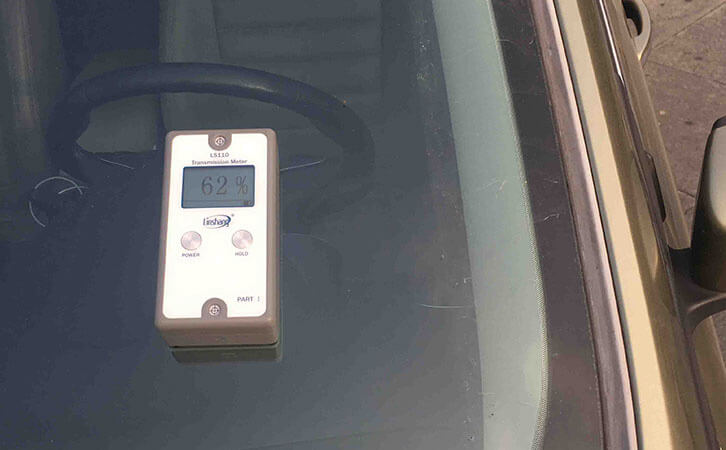Application of Light Transmittance Meter
Light transmittance is a physical word that indicates the ability of light to pass through the medium. Light transmittance can show the efficiency of light transmission through equipment and other devices. It directly affects the use of electronic devices that require accurate light, such as touch screens and transparent protective cases for mobile phones. For example, when the light transmittance of the window film does not reach the corresponding standard, it will affect the visibility of the driver and it is easy to cause a traffic accident. So how do we know the transmittance of various transparent and translucent materials such as glass and plastic? This requires the use of professional equipment for testing the transmittance of materials-light transmittance meter.
I. The Linshang light transmittance meter
Light transmittance meter is also called light transmission meter, which can detect various types transmittance with high precision resolution of transparent and translucent materials. At present, the main types of light transmittance meters are LS110, LS116, and LS117. These instruments can be used in ambient temperature of zero to forty degrees, and all of them adopt intelligent design. For example, the resolution of the LS116 can even reach 0.01%. Different types of light transmittance meters have their own characteristics. The characteristic of the LS116 is that the design of the parallel light path greatly improves the accuracy, which is almost the most accurate portable tester at present. The characteristics of LS117 are suitable for testing the light transmittance of a large number of translucent materials such as frosted glass and opal acrylic. Due to the special magnetic design, LS110 is very useful in automobile front shields and curtain wall glass, and can also conform to national standards, it is widely used in traffic police brigades and other public institutions.
II. Application Industry of light transmittance meter
The light transmittance meter has such a wide range of functions, which fields can it be applied to?
The most common is the detection of various transparent materials, such as glasses and sunglasses. Only through accurate light transmittance test can we ensure proper light transmittance and avoid the harm to human body caused by too strong light transmittance, and then use different technologies to satisfy the needs of different human physiques.
Secondly, the light transmittance meter can also be applied to the detection of mobile phone LCD screen, such as the new transparent protective case of Apple mobile phones, and the black pupil full-view screen developed by Samsung mobile phones using a through-hole scheme with high light transmittance. Because of its high light transmittance, it gives users a very high comfort experience. Many people, especially those who like to watch movies with laptop computers or have higher requirements for PPT, will tend to products with higher light transmittance to form a more comfortable visual experience when purchasing laptop computers.
The light transmittance meter can also be used to detect the light transmittance of various automobiles. The previous examples of light transmittance of window film that do not meet the relevant standards may cause traffic accidents, which illustrates the high requirements for window films in the automotive field. The traffic police also uses a professional light transmittance meter when checking the light transmittance of the windows.
The transmittance tester is widely used. In addition to the above, it is also used in the detection of various transparent or translucent materials. We also hope that the light transmittance meter can be applied to a wider range of fields in the future.
- Linshang Insulated Glass Unit Measuring Tools
- Spectacle lens anti-blue light detection---blue-violet light transmittance meter
- Measurement of Optical Density
- Difference of LS116 Transmission & LS117 OD Meter
- Difference between LS116 and LS117 Light Transmittance Meter
- What’s the Difference Between Point Light and Parallel Light Transmittance Meter
